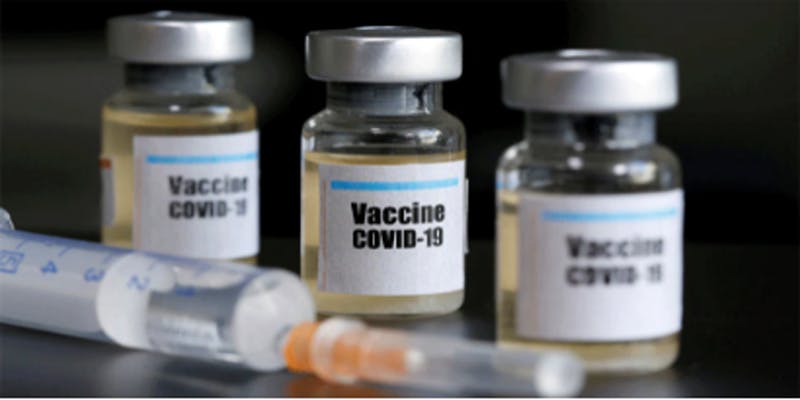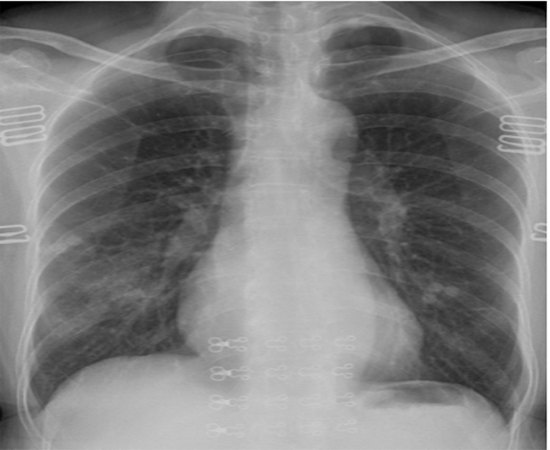
Many viral illnesses, such as Chikungunya, Ebola, Nipah, Bird Flu and MERS, have emerged in the last two decades. Last year the world woke up to another new deadly virus. An outbreak in the wet-market of Wuhan, a city in China of the virus named novel coronavirus which was later named SARS-CoV2. This virus affects the lungs and the respiratory tract, in-turn creating difficulties in breathing, On February 11, 2020, the World Health Organization (WHO) designated this condition as COVID-19, an abbreviation for Coronavirus Disease 2019.

Globally, 21,94,56,675 cases have been reported of this virus and 45,47,782 fatalities have also been reported as of 15th September 2021. The worst COVID-19 outbreaks have been recorded in the United States, India, Brazil, and Russia, where the number of confirmed cases has overtaken that of China. On January 30, 2020, the WHO designated the current COVID-19 outbreak a "Public Health Emergency of International Concern," and on March 11, 2020, it was labelled a "pandemic."
The only way to prevent this virus for a whole year was to maintain social distance, wear masks and at worst quarantine. In 2021, many vaccines for this virus were released. Never before in human history has there been such a rush to find a vaccine against a disease. By utilizing the power of AI, the speed of discovery had greatly increased. Scientists used a vaccinology-machine learning platform for predicting reliable vaccine candidates that relied on supervised classification models.

AI methods helped traditional technologies by drastically decreasing the time it takes to get a medication from bench to bedside by speeding up lead discovery, virtual screening, and validation processes. AI also speeded things up by generating relevant data for medication repurposing or repositioning by evaluating qualities of previously authorised and validated medicines using molecular descriptors and properties, something a human expert would not be able to do. BenevolentAI utilised machine learning to speed up its drug development process, identifying baricitinib as a possible COVID-19 medication. Another study used virtual screening and supervised learning to find possible COVID-19 medicines. Several other AI-based efforts have also been effective in finding COVID-19 candidates. For speeding up the drug development process, many machine learning methods and deep learning-based applications are being employed.
As said earlier, humankind has never witnessed such a kind of pandemic before, in the beginning of the pandemic there was no accurate information about the virus. One of the cons of technology passing on information with an efficient speed is that the false information and rumors also spread at a very high rate. There were thousands of various kinds of home remedies that were discovered during the pandemic that had no factual background. Another set of thousand rumours about Covid-19 also started spreading, some too good to be true, at the same time some creating havoc among common people and creating another set of problems.

Due to the avalanche of information, this pandemic had turned into an infodemic. Understanding knowledge, awareness and practices toward COVID-19 by tapping information from social media platforms like Twitter, Facebook etc. can help in devising the strategy to assemble and disseminate timely and correct information for mitigating the impact of COVID-19. Machine learning algorithms may be used to detect patterns and conduct sentiment analysis, as well as offer information about the source of incorrect information and aid in the suppression of rumours and disinformation. AI methods may also be utilized to give a clear image of recovery rates, healthcare accessibility and availability, and gap detection. In this extremely dynamic environment, AI can give the most up-to-date information on new research in diagnosis, treatment, symptom spectrum, and therapeutic results, which will aid doctors in real-world scenarios and the general public in overcoming dread and panic.
There are many more applications of AI in Covid era. AI may be used to supplement mobile health applications where smart devices such as watches, phones, cameras, and a variety of wearable devices can be used for diagnosis, contact tracking, and efficient monitoring. In telemedicine, applications like AI4COVID-19, which rely on audio recording samples of 2 s cough, can be employed. Also, COVID-19 instances were detected and quantified using AI from chest x-ray and CT scan pictures. COVID-19 detection neural network (COVNet) is a deep learning model that uses visual 2D and 3D characteristics derived from volumetric chest CT scans to distinguish between COVID-19 and community-acquired pneumonia.

AI-based triage systems can assist medical staff and healthcare workers in reducing their workload by automating several processes such as providing training to practitioners, determining the mode of treatment and care by analyzing clinical data using pattern recognition approaches, digitising patient reports, and providing solutions that reduce their contact with patients. AI may be used to categorise patients based on the severity of their symptoms, genetic disposition, and clinical reports into mild, moderate, and severe categories, allowing for alternative methods to be taken for the most successful treatment of the patients. In asymptomatic instances or patients with minor symptoms, AI in telemedicine may also be utilized to minimize the need for frequent and needless hospital visits by remotely monitoring cases and capturing patient data.
AI-based medical chatbots may also be used for consultations, decreasing hospital overcrowding as well as the transmission of infection, and therefore preventing vital care services from running smoothly. Chatbots like Clara from the Centers for Disease Control and Prevention and Zini from the National Institutes of Health are giving much-needed assistance to patients in remote locations. By collecting information from social media platforms, calls, and news sites, AI may be used to anticipate the spread of viruses and build early warning systems, as well as give relevant information about sensitive locations and predict morbidity and death. Using machine learning, Bluedot detected a cluster of pneumonia patients and forecasted the COVID-19 epidemic's outbreak and geographic location based on existing data. HealthMap compiles publicly available COVID-19 data and makes it easily accessible to aid in the effective tracking of the virus's transmission. The usefulness of AI in identifying and forecasting COVID-19 outbreaks using multitudinal and multimodal data has recently been underlined.

As the current situation necessitates fast delivery of remedies, different digital technologies and artificial intelligence (AI) have greatly aided the response to this epidemic. In COVID-19 diagnosis and drug discovery, AI was proven to be on level with, if not better than, human specialists. Before AI takes the lead in diagnostics and other fields, we need more datasets for training AI models, as well as a legal framework and ethical concerns for data sharing. Availability and exchange of clinical and epidemiological data, computational resources, scalability, privacy, and ethical issues are all barriers in harnessing AI to its full potential in the current environment.
